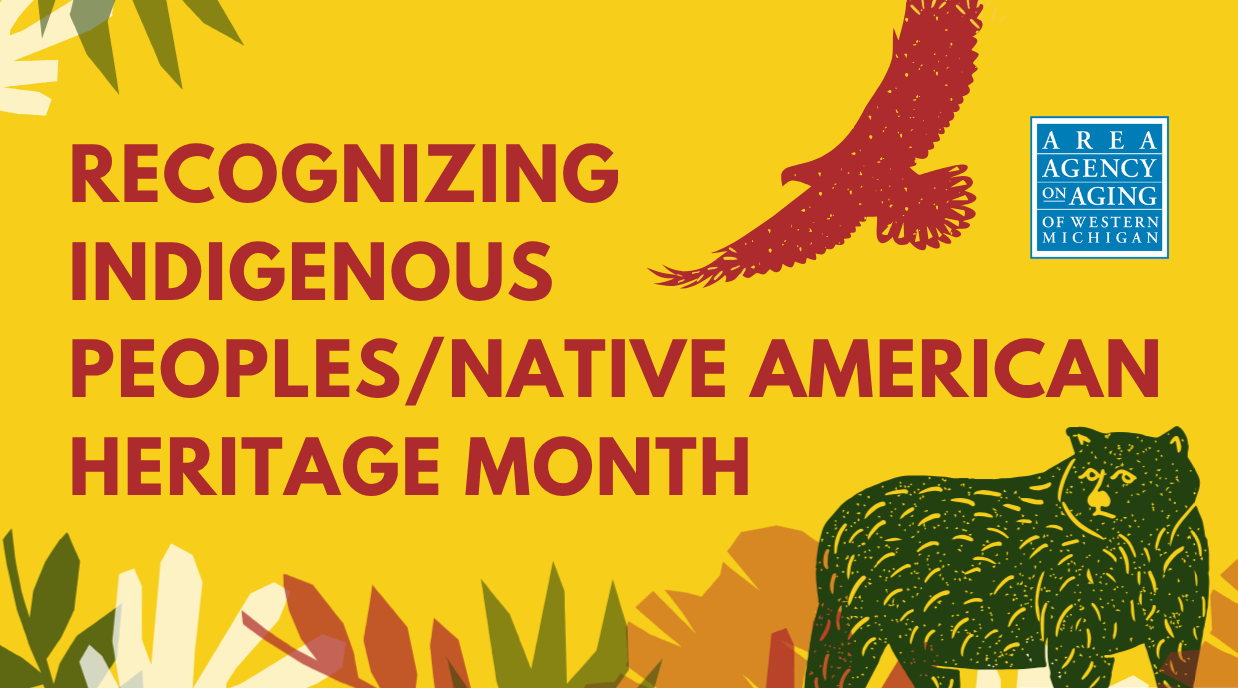Articles
Recognizing Indigenous Peoples/Native American Heritage Month

The Area Agency on Aging of Western Michigan (AAAWM) recognizes November as Indigenous Peoples/Native American Heritage Month. Throughout this month, we encourage everyone to pay tribute to the valuable ancestry and traditions of Native Americans and Indigenous peoples. This month also provides us with an opportunity to bring awareness to the unique challenges Indigenous peoples have faced historically and in the present.
It is important that we acknowledge the lands we reside on and use today were first inhabited by Native American tribes before being colonized by European settlers. Along with this, it’s vital we recognize the ill treatment of Indigenous peoples that followed. Below are a few tools you can use to connect, engage, and learn from this meaningful history, and even learn what you can do to be a supporter!
Explore Resources
Today, many ancestors of the original Indigenous peoples who resided on current lands continue to take part in their cultural traditions. You can explore their languages and music, art and artifacts, and “people to know” through several online educational resources. The Smithsonian Institution has many resources for you to delve into and appreciate the Indigenous cultures and history.
The Seven Grandfather Teachings
Learn about the 7 lessons to living a good life that have been a part of the Native American Culture since the beginning of time: The Seven Grandfather Teachings. Explore the 7 lessons and learn more about Native American Culture from the Nottawaseppi Huron Band of the Potawatomi Tribe. Have you been applying these seven lessons in your life?
Documentary
St. Bonaventure Indian Mission and School in New Mexico highlights Native American peoples’ experiences in a captivating documentary series. “This special documentary series, A Legacy of Hope, brings you face to face with the daily realities—and quiet resilience—of families across the Eastern Navajo Nation. From food insecurity and unsafe housing to the struggle for clean water and quality education, these short films shine a light on the vital, life-changing work of St. Bonaventure Indian Mission & School. Each chapter tells a powerful story of hope, dignity, and the impact of community support.”
Boarding Schools
Interested in learning about “Indian” boarding schools in the United States? The Partnership with Native Americans has a downloadable fact sheet you can explore. Learn about why the government started boarding schools, how these boarding schools impacted native children and families, and why the history behind these boarding schools remains an untold story.
An Interactive Map by Native Land & Understanding Land Acknowledgments
“We strive to map Indigenous lands in a way that changes, challenges, and improves the way people see history and the present day. We hope to strengthen the spiritual bonds that people have with the land, its people, and its meaning” (Native-Land.ca).
Explore the interactive map to see Indigenous territories, languages, and treaties in your area. After you’ve explored the map to see what Indigenous lands may overlap with your life and daily activities, take some time to read and understand what a land acknowledgment is. This guide from the Native American Institute at Michigan State University is a great resource.
Tagged:

